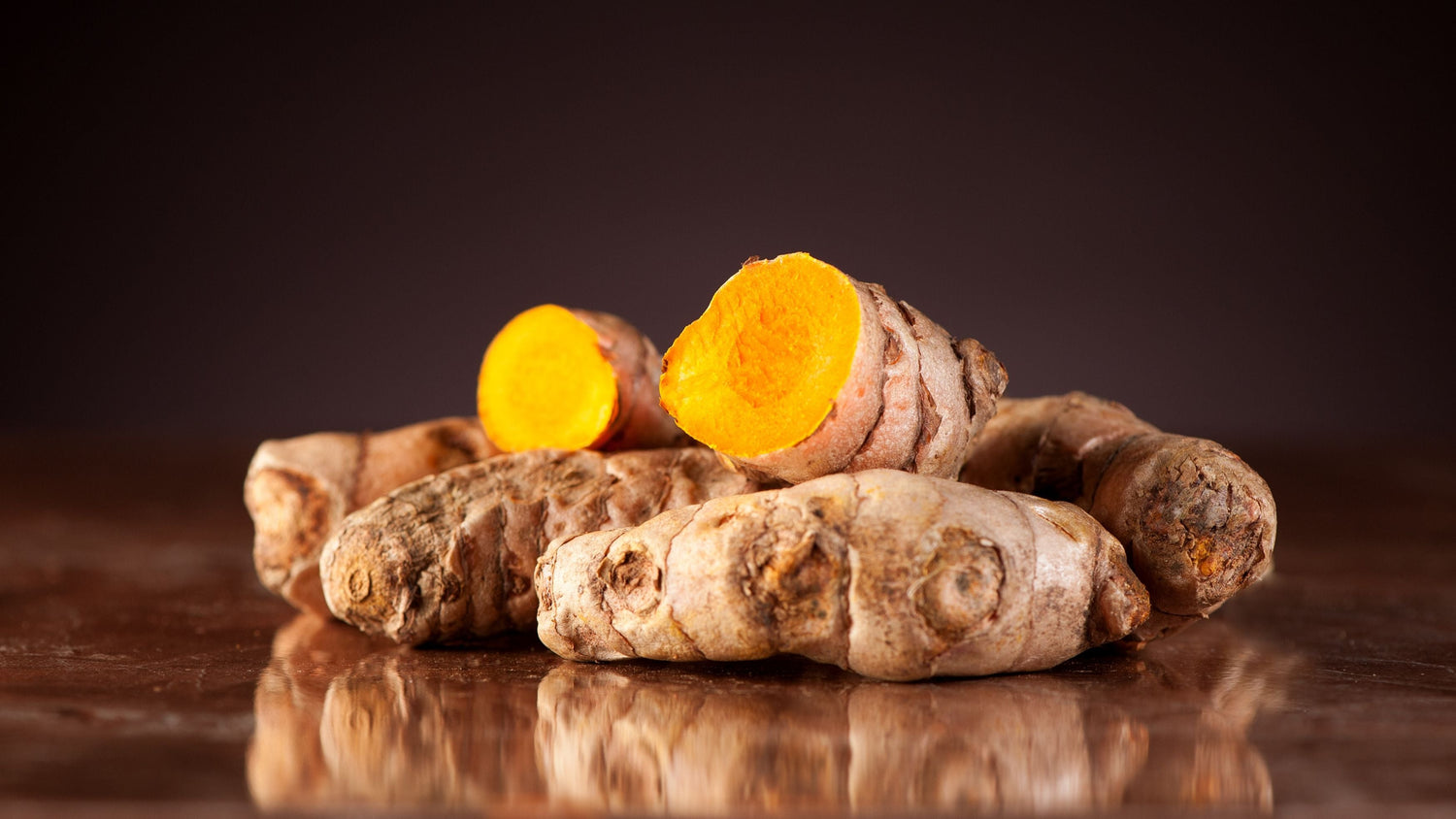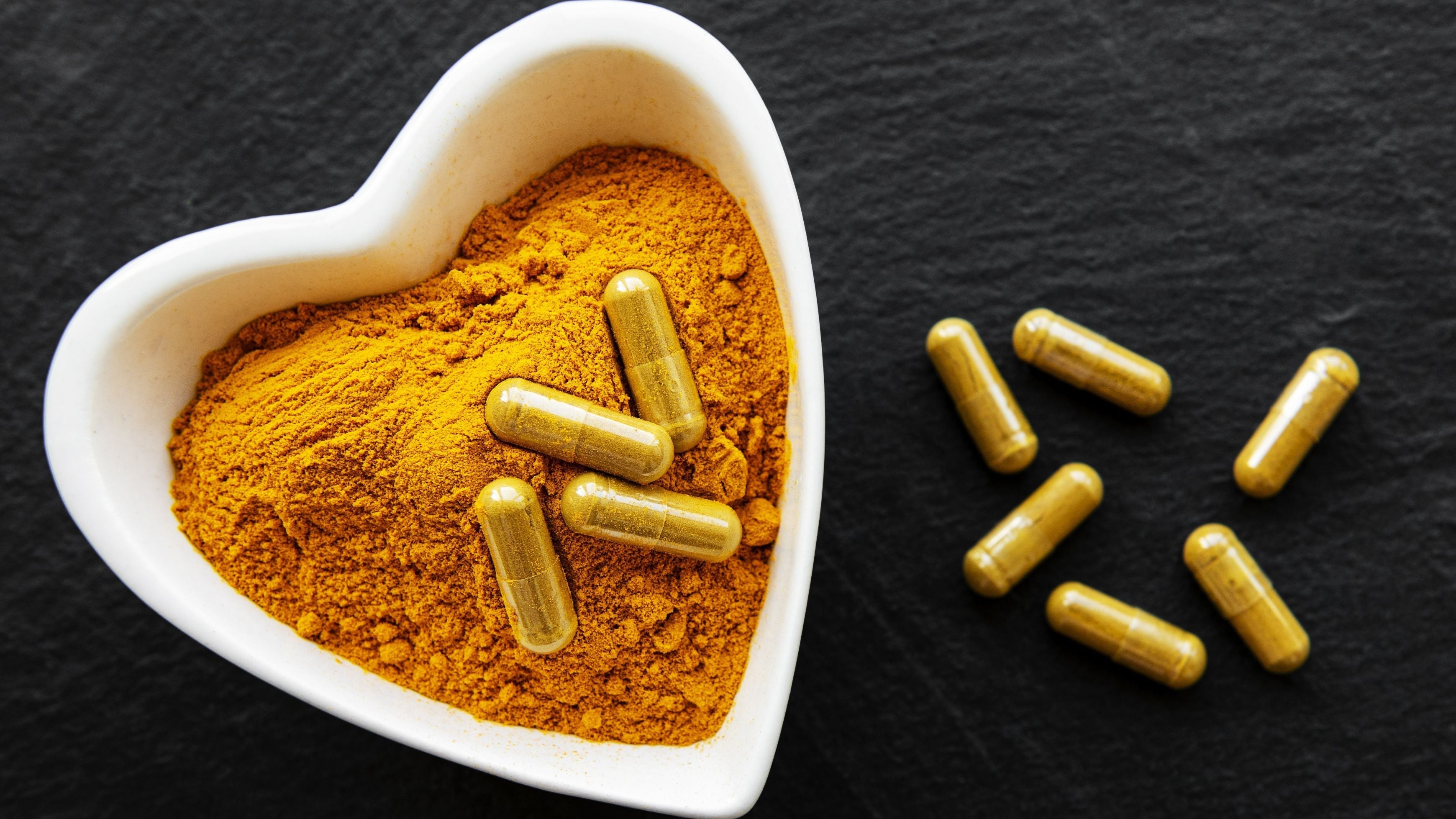Most people only see the end product: golden-yellow turmeric powder as a spice in curries or golden milk. But the story begins much earlier – with a tropical plant with large leaves, a surprising flower, and a root full of secrets. Find out what makes the turmeric plant so special and how you can use it to its full potential.
In this article you will learn
The most important points in brief
The turmeric plant (turmeric root) originates from India and belongs to the ginger family.
It grows to about 1 meter tall with large leaves and forms a cone-shaped turmeric flower in summer.
The golden-yellow turmeric spice comes from the dried rhizome (root) of the plant.
The root contains curcumin – a substance associated with numerous health-promoting properties.
What is turmeric? A plant with a history
The turmeric plant (botanical name: Curcuma longa) belongs to the ginger family and originally comes from India and present-day Indonesia. There, it has been used for over 4,000 years not only as a spice but also plays a central role in Ayurveda, the traditional Indian system of medicine.
Turmeric, also commonly called yellow root, grows in tropical regions and thrives in warm, humid conditions. While it is possible to cultivate it as a houseplant in Germany, it is not entirely easy, as the plant requires plenty of warmth, high humidity, and patience.
This is what the turmeric plant looks like.
The turmeric plant grows to about 1 meter tall and develops large, elongated leaves reminiscent of banana leaves. Its unique feature is the beautiful turmeric flower produced in summer: a cone-shaped flower spike that appears in delicate pink, white, or purple.

The part of the turmeric plant used as a spice is the rhizome – a knobby, thickened root that is brown on the outside and bright yellow-orange on the inside.
This rhizome contains the active ingredient curcumin , which is responsible for turmeric's intense color and special properties. By the way: If you cut open a fresh turmeric root, it will immediately stain your fingers yellow-orange. That's the curcumin at work.
The ingredients of the turmeric plant
The turmeric plant is a true nutritional powerhouse, even though curcumin is usually the focus of attention. Here's a rough overview of what's really in the rhizome:
|
Curcuminoids (3-5%) |
Essential oils (up to 5%) |
Vitamins & Minerals |
| Curcumin (main active ingredient) |
Turmeron |
Vitamin C, B vitamins (B1, B2, B3, B6) |
| Demethoxycurcumin |
Atlantis |
Potassium, iron, magnesium, manganese |
| Bisdemethoxycurcumin |
Zingiberen |
Dietary fiber |
The secret lies in the interplay: Scientists assume that it is not curcumin alone, but the synergistic interaction of all ingredients that makes turmeric so special.
Turmeric plant vs. turmeric spice: What is the difference?
The turmeric plant itself is the living, growing plant with leaves, roots, and flowers. The turmeric spice you can buy is the dried and ground rhizome of the plant.
This is how the spice is produced:
- The rhizome is harvested (usually after about 8–10 months of growth)
- It is boiled or steamed.
- Then dried
- And finally ground into a fine powder.
And there you have it: the golden-yellow turmeric spice you find in the supermarket! The taste is slightly earthy, somewhat bitter and spicy – perfect for curries, smoothies, golden milk or as a coloring agent in various dishes.

Is turmeric healthy?
For millennia, turmeric has been considered a true remedy and valued for its diverse effects. In Ayurveda, the traditional Indian system of medicine, turmeric is considered a "hot" spice with purifying and revitalizing properties.
The rhizome of the turmeric plant is still used in a variety of ways there today:
- For digestive problems : Turmeric is said to stimulate bile production and support fat digestion.
- For joint problems : Its anti-inflammatory properties were valued early on.
- For wound healing : Applied externally as a paste.
- For general strengthening of the immune system and well-being
What traditional medicine has long known, modern research can now confirm: Curcumin , the most important ingredient in turmeric, is full of potential. However, it is hardly absorbed by the body.
New scientific developments are creating new approaches here: Modern formulations enable significantly better absorption and make the effect truly effective for the first time.

The problem with regular turmeric spice
Imagine seasoning your food with turmeric every day because you want to benefit from its health advantages – great, right? Theoretically, yes, but practically only to a limited extent. Because:
- Curcumin is fat-soluble , so it can hardly be absorbed by our intestines.
- Absorption without additives is minimal – less than 1% actually enters the bloodstream.
- Curcumin is quickly broken down – the body excretes it rapidly.
If you really want to benefit from the health advantages, there's hardly any way around standardized preparations .
Fermented turmeric powder is an interesting option. Here, the turmeric plant, or rather its rhizome, undergoes a fermentation process – similar to sauerkraut or kimchi.
This process creates additional bioactive compounds, and bioavailability also increases significantly (2). Another advantage: Fermented foods are often easier on the gastrointestinal tract and can have a positive effect on the gut flora.

The clever solution: Micellar turmeric
If you want to use turmeric specifically for your health, it's worth paying close attention to the form it's administered in. Only this can solve the problem of poor absorption. Micelle technology is a particularly promising solution.
This is how micelle technology works:
In micellar turmeric, the curcumin is packaged into tiny, water-soluble particles (micelles). This sounds complicated, but it's ingenious: As a result, the body can absorb the curcumin up to 185 times better than from regular turmeric spice (1).

The principle is similar to that of an emulsion – imagine trying to mix oil and water. Normally, this isn't possible, but with an emulsifier, it suddenly is. Micellar turmeric does exactly that: it makes the fat-soluble curcumin water-soluble, and therefore much more easily absorbed by your body.




Leave a comment
This site is protected by hCaptcha and the hCaptcha Privacy Policy and Terms of Service apply.